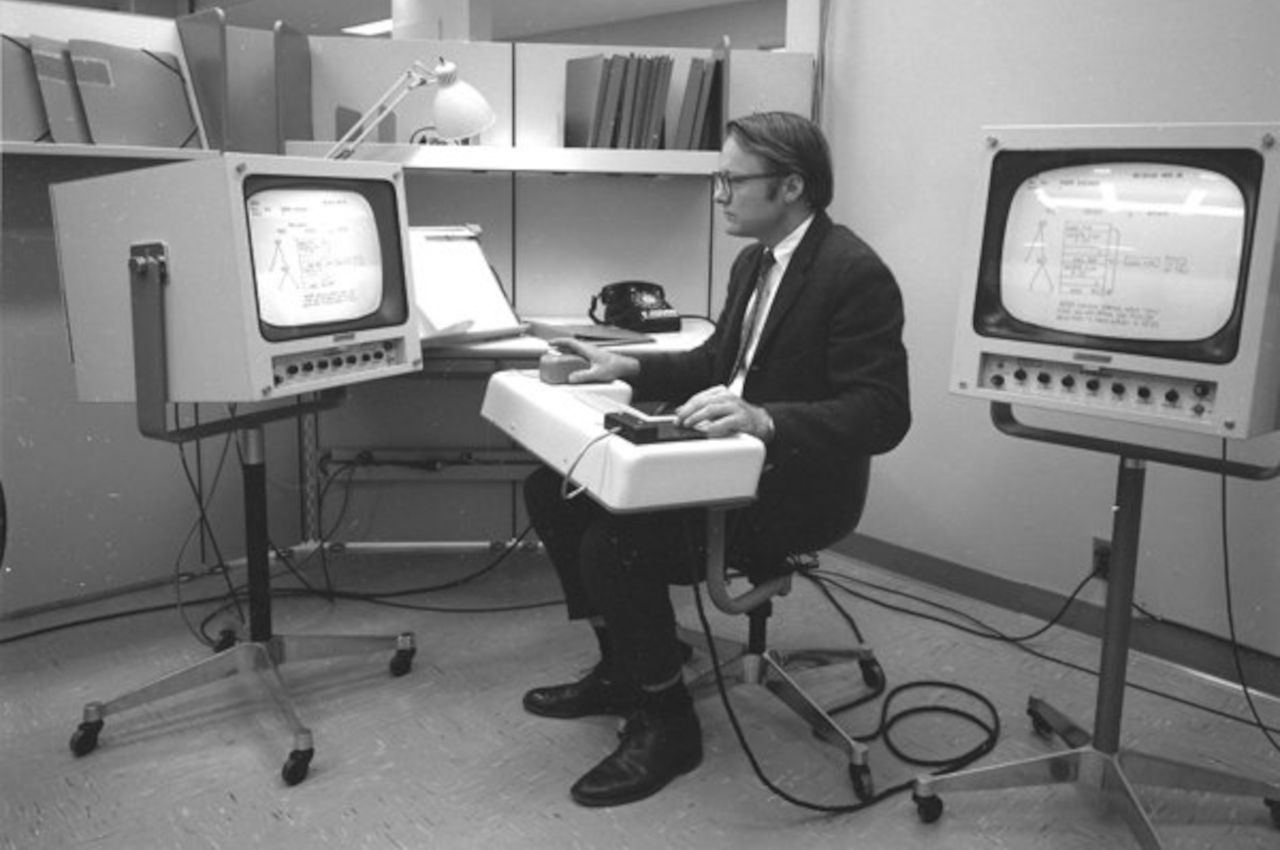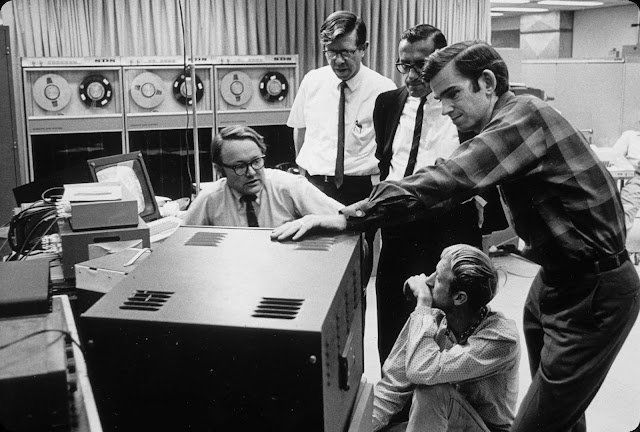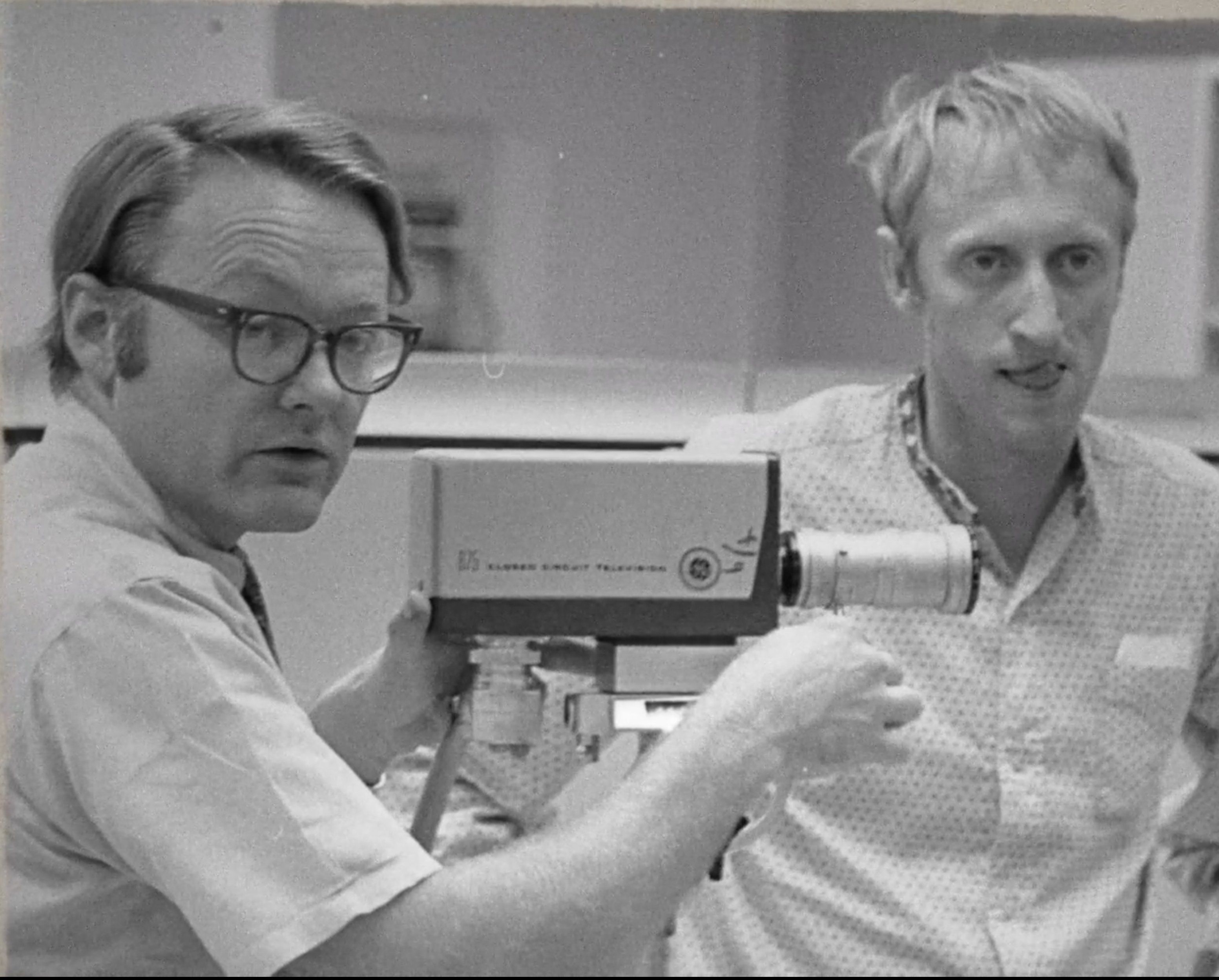The Time I Met Bill English, Co-Creator of the Mouse
I interviewed Bill English in May 2014, about six years before his death on 26 July, 2020, at age 91. English was Doug Engelbart’s right-hand man in the Mother of All Demos in 1968 and helped develop the mouse.

This post is to honour the one-year anniversary of the passing of Bill English, at age 91, on 26 July, 2020. English was Doug Engelbart’s right-hand man in the Mother of All Demos in 1968 and a key developer of the oN-Line System (NLS). The post below was initially part of a book I was writing about Engelbart. The book was eventually abandoned, but the memory of meeting English in 2014 remains. As does, I hope, the achievements of those SRI pioneers. RIP, Bill.
It was a sunny but cold day at the end of May 2014, when I met Bill English and his wife Roberta for lunch in Menlo Park, Silicon Valley. The venue was the cafe beside Kepler’s, a bookstore popular amongst the counterculture of the 1960s. Now 85, English looked frail and he shivered in the cold wind as we sat down at an outdoor table. Yet he had a warm smile and it never left his face throughout the interview. It seemed like that smile was his main energy source. I couldn’t help comparing the happy face of Bill English to the often scowling visage of Doug Engelbart in his later years.
Engelbart, who had died aged 88 less than a year before I met English, is famous for introducing to the world many of the personal computing constructs we’re now familiar with: the graphical user interface, hypertext linking, the mouse, teleconferencing, online journals, remote collaboration work done via the internet. All of this was on display in Engelbart’s famous “Mother of all Demos,” a presentation he made at the Fall Joint Computer Conference in San Francisco, in December 1968. While the World Wide Web was still a quarter of a century away at the time, this is where the seeds of web development were planted.
Bill English was Engelbart’s right-hand man and had a key role in both the demo, and the build up to it. Indeed, as an engineer, English is closer in spirit to today’s role of web developer than Engelbart ever was. Engelbart was the undoubted visionary and the architect of a numbet of concepts that eventually led to the web. But English was the one who got his hands dirty with the hardware and software (he was more on the hardware side than software, but that’s because the hardware was still being defined at that point).
During our lunch, Bill’s wife Roberta – who was in sturdier health – sat beside him protectively. They’d met in the late 1960s, through work. Roberta had been Engelbart’s secretary from 1968, so she was present at the Mother of All Demos too. “He was the matchmaker,” said Bill about Engelbart, looking at Roberta with a twinkle in his eye. “Doug used to organize canoe trips down the Russian river,” he continued, before Roberta interrupted. “Never mind the canoe trips, okay…” she said, with an embarrassed smile. “Talk about science.”

The mouse was one of the first things Engelbart and English worked on together. But it took a while for it to evolve from a fanciful idea in Engelbart’s head, to a real, functioning object built by English.
Englebart first came up with the idea of a “pointing device,” to complement the keyboard of the CDC 160A mini-computer and its simple display. He had mentioned such a device in a 1962 paper, but at this time it was purely theoretical. He did not describe what the “pointer” looked like or indeed how it would work.
The idea slowly percolated in Engelbart’s mind. An entry in his journal dated 14 November, 1963, mentions a “bug” that would provide “coordination with the keyboard.” Although vague in details, Engelbart describes the underpinnings of what would become the mouse: a “3-point bug — a drop point and 2 orthogonal wheels.”
But Engelbart needed someone with a more practical bent to investigate pointing devices and come up with a prototype for his “bug” idea. So in early 1964, Bill English set to work comparing the existing pointing devices of the era. He collected a bunch of them, including a joystick, a light pen and something called a “grafacon” (an early tablet with stylus pen). At the same time, Engelbart showed English a paper about an instrument called a “planimeter,” which allows you to measure area. You may remember using such a device in your high school math class, to measure the circumference of a circle.
English quickly grokked that the planimeter would enable the movement of the mouse to correlate with the movement of the cursor on screen. “With the help of the SRI Machine Shop, I managed to put a planimeter in a little box which you could move around, with two wheels,” English explained to me fifty years later, in 2014. “That was the first mouse.” English and Engelbart did further experiments to compare it with other pointing devices. “The mouse was clearly, by far, the best,” said English.

At the same time as English worked on the prototype mouse, a programmer named Tom Humphrey was making progress on the computer display. Humphrey wasn’t part of Engelbart’s team — he was an SRI programmer who contracted out his time to several internal projects. Nevertheless, Engelbart’s small, piecemeal group was making steady progress towards a prototype computer system. It was only a single computer workstation at that point, but it was showing promise. “Pretty simple-minded at first,” English recalled of these early lab experiments, “but we had a display, we could point things on it, we could delete words… the fundamentals of it was all there.”
The word “mouse” was first used in a July 1965 paper for NASA, which Engelbart and English co-wrote with Bonnie Huddart. Entitled ‘Computer-Aided Display Control,’ it was effectively a status report on Engelbart’s augmentation project. Here’s how the paper described the early mouse:
“Within comfortable reach of the user’s right hand is a device called the “mouse,” which we developed for evaluation (along with others, such as light pen, Grafacon, joystick, etc,) as a means for selecting those displayed text entities upon which the commands are to operate.”
The term “bug,” which Engelbart initially used for the mouse, was now being used to describe the cursor on the screen. In the report, the mouse is just one of several potential “bug-positioning devices” being described. The joystick, Grafacon and other pointing devices — including an awkward-sounding “knee control” device — are still options under consideration. But the report makes clear that the mouse is the device Engelbart and co favor: “These results indicate that for the more experienced subjects the “mouse” was both faster and more accurate than any other device — including the light pen.”
Curiously, the report adds that for “inexperienced subjects,” a combination of the light pen and the knee control is more effective. Imagine the reaction of Steve Jobs in the late 70s, had the knee control been what Xerox-PARC showed him! But that was never going to happen under Engelbart’s direction. Given his lifelong bias towards upskilling, it’s clear he much preferred the device that was better for “experienced” users: the mouse.

Engelbart filed a patent for the mouse in June 1967 and it was granted in January 1970. Bill English was not listed as a co-inventor, which Engelbart later regretted. “I couldn’t have done it without Bill,” he admitted, “but the patent attorney didn’t agree with me in wanting Bill to share the patent.”
Bill English has never shown any bitterness about not being credited as a co-inventor of the mouse. He’s continued to smile through the years, using that positive energy to keep building new things. I asked whether the work he did with Doug Engelbart is what he’s most proud of in his career? “Probably, yes,” he replied. But he then told me about another of his creations — one he dreamed up himself. “In magnetics,” he said with a chuckle, “I designed and built a train controller system that they currently use, as far as I know, in the New York subway.” I got the impression that Bill English is most interested in people using his technology, even if they don’t know who built it. Being acknowledged in a patent or in the press isn’t what drives him.
As we wrapped up our interview on that chilly day at Kepler’s cafe, I asked English if he realized back in the 1960s how important an invention the mouse would become. “I don’t know that I sat back and looked at it, and said wow that’s significant,” he replied. “No, you just keep doing it,” he said, and grinned.
Lead image: Wikimedia
See also: 1968: The Mother of All Demos
Buy the Book
My Web 2.0 memoir, Bubble Blog: From Outsider to Insider in Silicon Valley's Web 2.0 Revolution, is now available to purchase:
- Paperback, US$19.99: Amazon; Bookshop.org
- eBook, US$9.99: Amazon Kindle Store; Apple Books; Google Play
Or search for "Bubble Blog MacManus" on your local online bookstore.